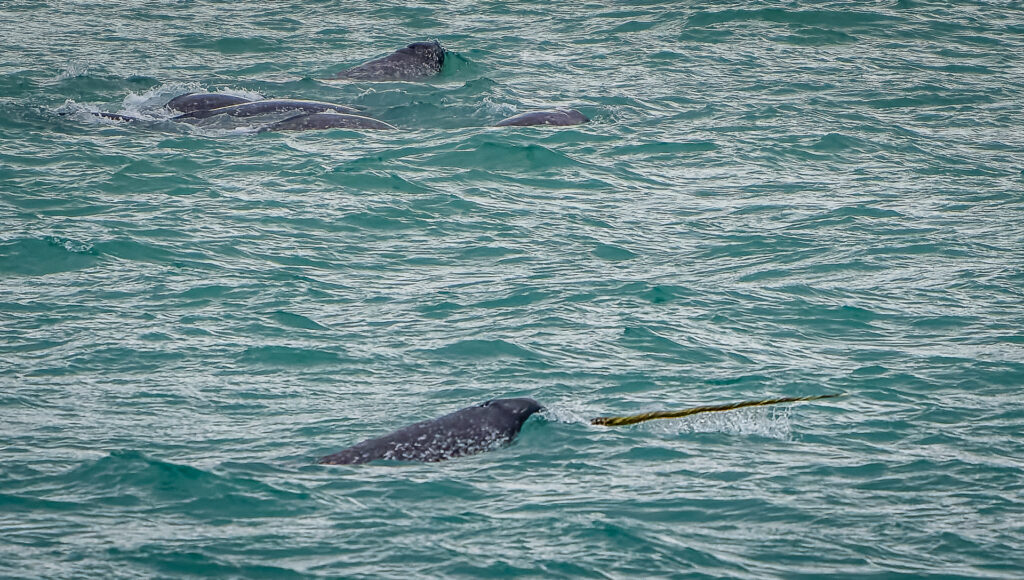
Narwhal Alert!
“Narwhals portside!” An urgent rap on my door at 6:00 am put me into overdrive when I was merely thinking about Arctic Adventures. I grabbed coat, hat, gloves and camera and hurried up on deck. I was on a small yacht in Croker Bay on the south coast of Devon Island in the Nunavut Canadian Arctic Archipelago.
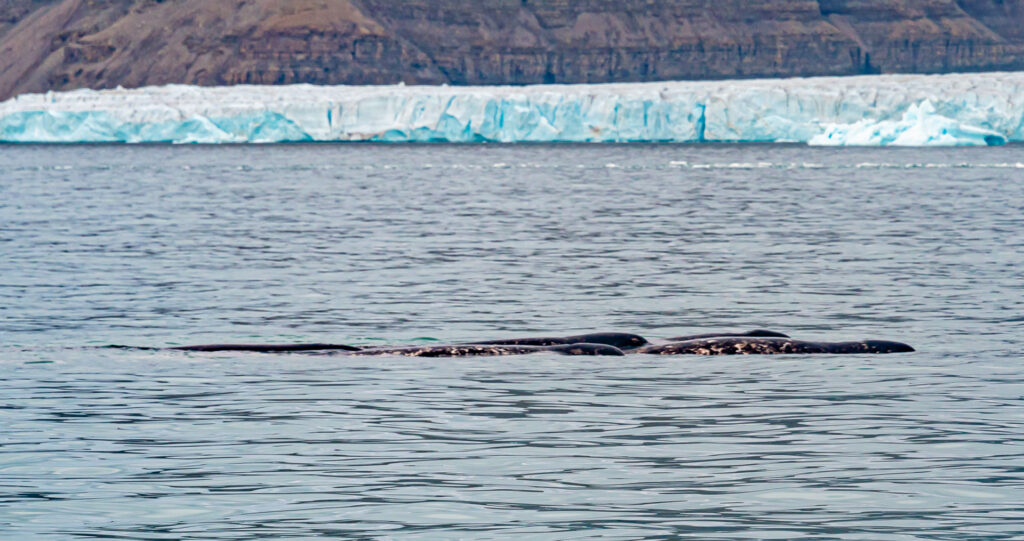
Unicorns of the Sea
There they were. A pod of about eight narwhals gracefully dipping and undulating at the base of towering twin turquoise glaciers. Their mottled beige skin contrasted with the milky glacier-melt water. I watched, entranced by these beautiful creatures as they moved through the water.
The early morning was calm and quiet with just rippling sounds of water as the narwhals rhythmically continued diving. I was also focused on photographing one of the narwhal’s ivory tusks which can grow to nine feet. These tusks gave narwhals their legendary status “Unicorns of the Sea“, a term coined by early explorers. Later, during these Arctic Adventures, I would see and hold a tusk.
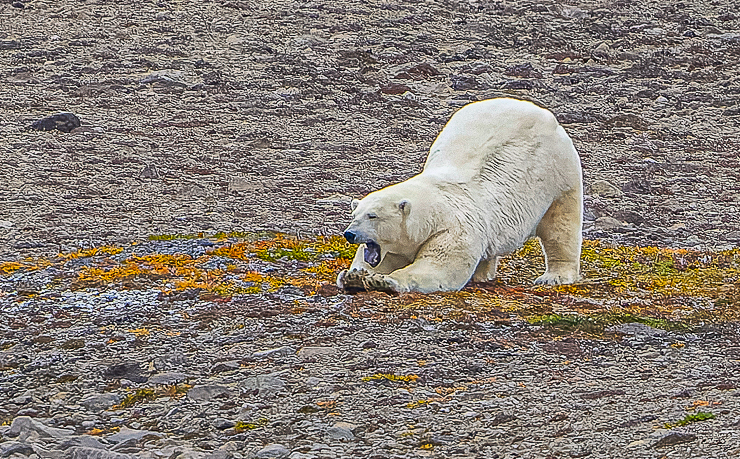
Arctic Animals and Tundra Discoveries
In Northwest Passage Arctic Adventures I covered Arctic adventure highlights and some history of intrepid explorers. For centuries they searched for a passage across the top of the world, linking Atlantic and Pacific.
Now we meet Arctic wildlife, from three-inch furry caterpillars to massive polar bears, walrus and gleaming white beluga whales. Large and small, these are creatures that survive in an incredibly harsh environment. Also, after trudging the tundra, I turn the spotlight on flowers and plants that thrive in a short snowless summer window.
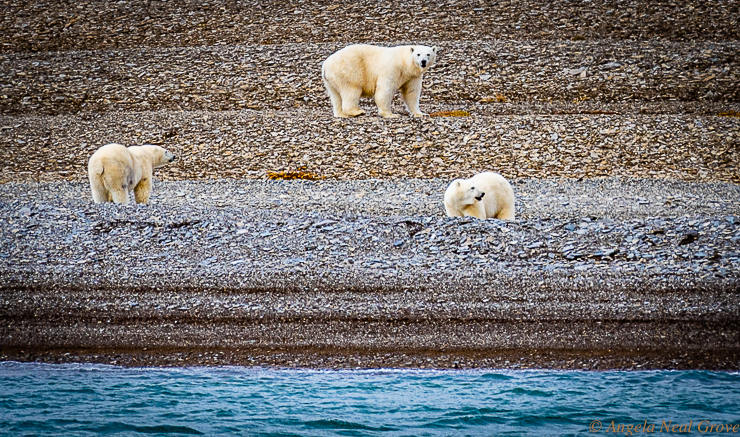
Polar Bears: Arctic Icons
Polar bears are Arctic Icons. Weighing up to 1,500 lbs, and sometimes reaching 12ft long they are synonymous with the region. Their primary food are seals as they depend on the fatty skin and blubber. Seals are lightening fast in the water so the lumbering bears sit patiently by seal’s breathing holes in the sea ice. They wait for their blubbery prey to come to a hole to catch a breath of air and pounce with their paws. Bears usually catch and eat around fifty seals each year.
We navigated the area in a small yacht during a brief summer window when there is little sea ice and no seal breathing holes. This meant bears would be scavenging beaches and tundra. In all we saw about 38 bears. Some were solitary, some with cubs. In winter they are hunted by Inuit people for subsistence so bears often took off when they saw us. And no, there was little hope of getting one of those coveted National Geographic shots of a bear on an ice-floe complete with an artistic reflection! However each polar bear sighting was special.
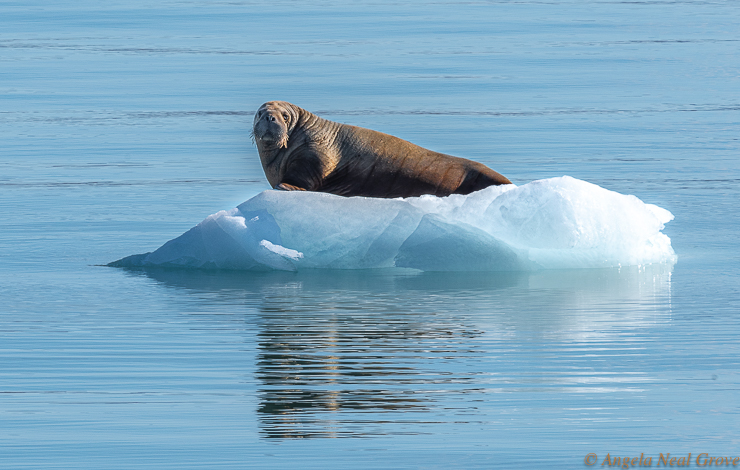
Walrus
If ice-floe polar bears were unlikely I was luckier with an Atlantic Walrus. One afternoon we spotted a juvenile clambering onto a small chunk of glacier ice, its cinnamon-brown hulk steaming in the cold air. The current took the walrus right past us and we peered inquisitively at each other. Preferred food for walrus is a smorgasborg of mollusks, clams, snails, sea cucumber, crab and shrimp. Like polar bears, they too are threatened by climate change which takes them away from their feeding grounds.
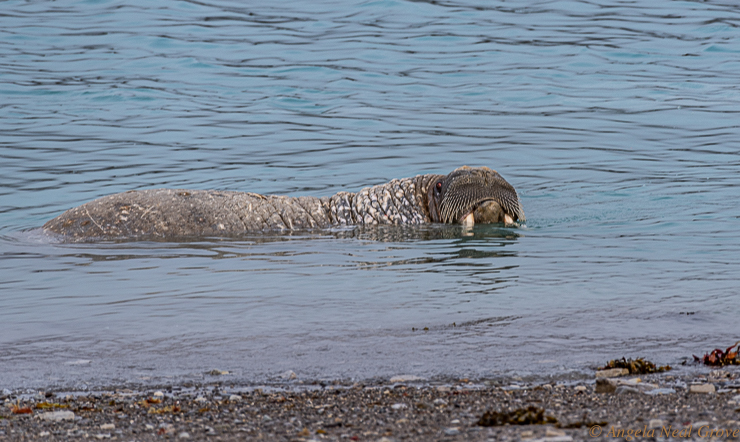
Treking the Tundra
Treking and exploring the tundra was, for me, an Arctic Adventure highlight. In places brilliant green spongy moss was studded with diminutive jewel-bright flowers. Golden Snow Buttercups traced a path by one small stream. There were plump cushions of amethyst Purple Saxifrage, by grey rocky outcrops (this is the mostly northerly growing wildflower on the planet). Clumps of magenta dwarf fireweed glistened with diamond raindrops and fragile Arctic poppies, the colour of lemon drops, stood bravely on fragile matchstick-thin stems. Some plants send long red tendril roots skimming across the barren rocks.
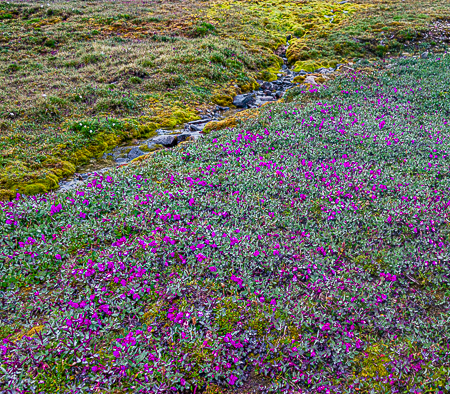
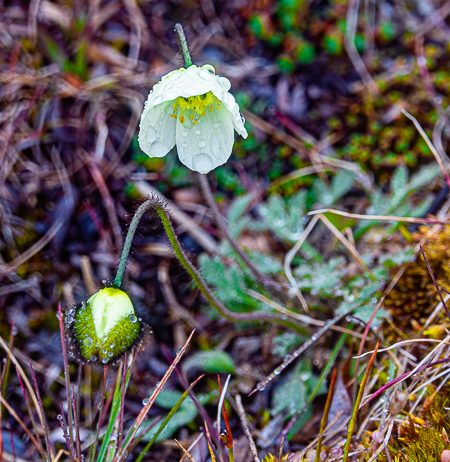
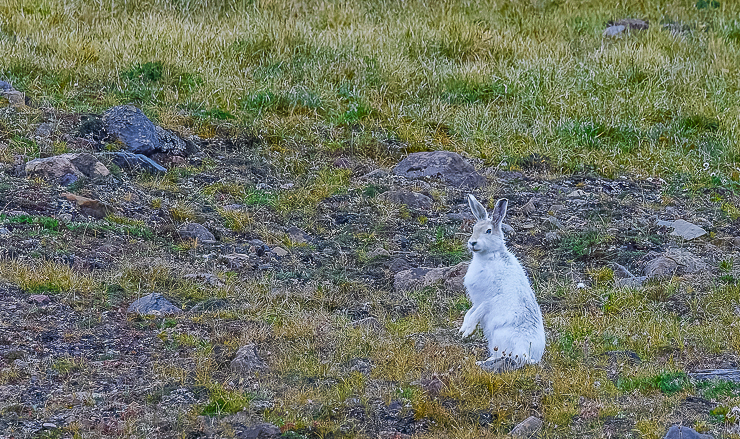
Tundra, a derivation of tunturia, a Finnish word which means treeless plain, has a frigid, windy climate with scant precipitation as dry snow. Beneath the spongy mossy surface is permafrost, a rock-hard layer of frozen earth and shale. During the brief summer growing season, about 6 – 10 weeks, the sun is out for 24 hours so plants grow fast.
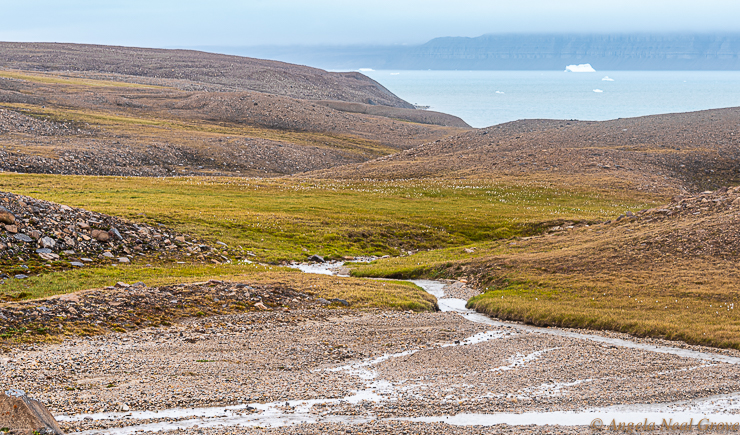
In summer the Tundra top layer thaws but when ice melts it can’t drain into the soil because of the permafrost barrier so water collects in bogs and ponds. I had knee-high Muckboots which had good traction and kept me dry. Essential gear for the Arctic. As the Tundra is pristine it is also a question of finding your own way through bogs and across slippery rocks. Fun but challenging!
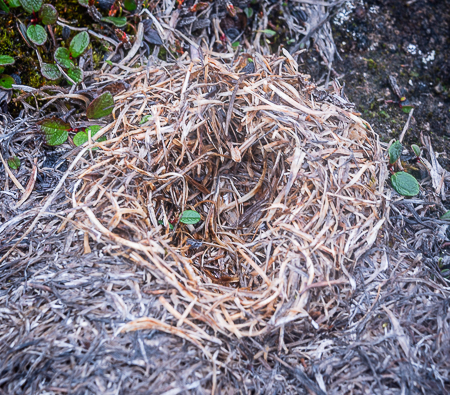
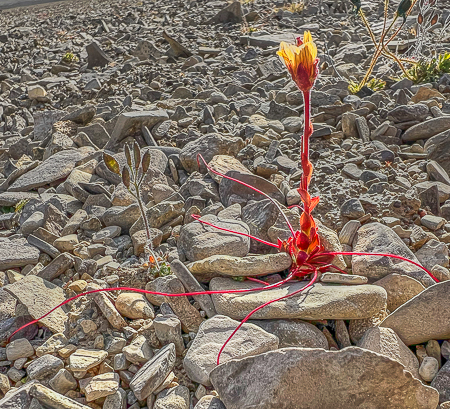
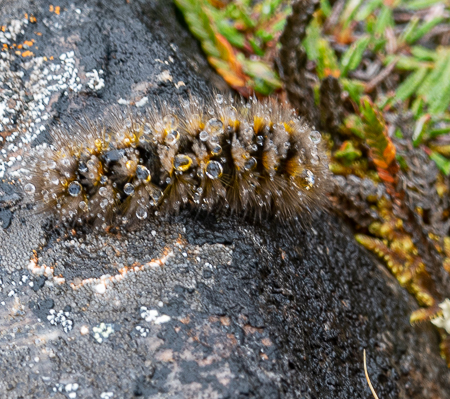
Arctic Adventures
Arctic air temperatures are around -29 F in winter, with water at 29 F. The water drops to 28 F in winter, freezing point for seawater. As polar bears depend on ice to catch seals they are threatened when they have to travel long distances across open water to find prey. All of the creatures which call Arctic home, birds, mammals and insects are threatened by global warming. So is the unique flora.
Now there is open water for an interval each summer there is also a threat to wildlife from shipping. And there is the strategic aspect and threat of mining and drilling. I will go into this a little more in the next and final piece on my Arctic Adventures.
For now the high Canadian Artic remains pristine, unpoluted on land and air and off the grid.
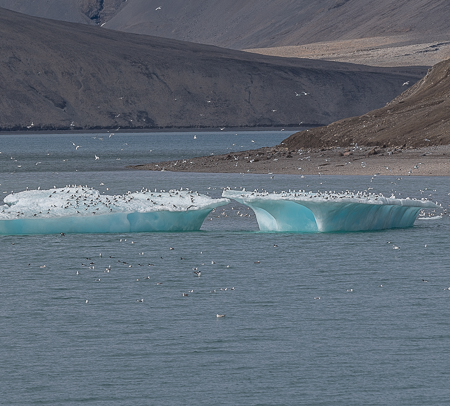
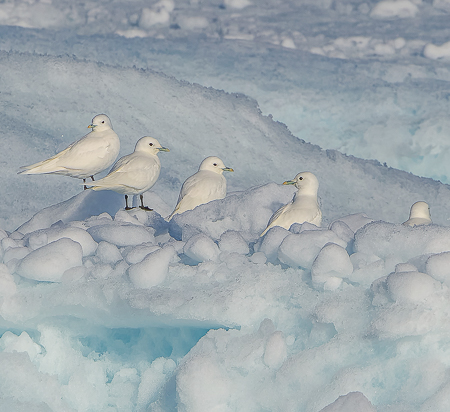
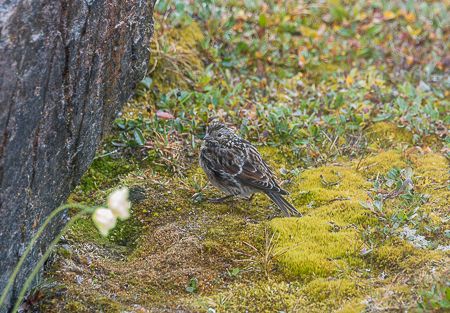
Two clips: Drone footage of narwhals, and another of beluga whales dipping through the icy waters. This may not display on all devices.